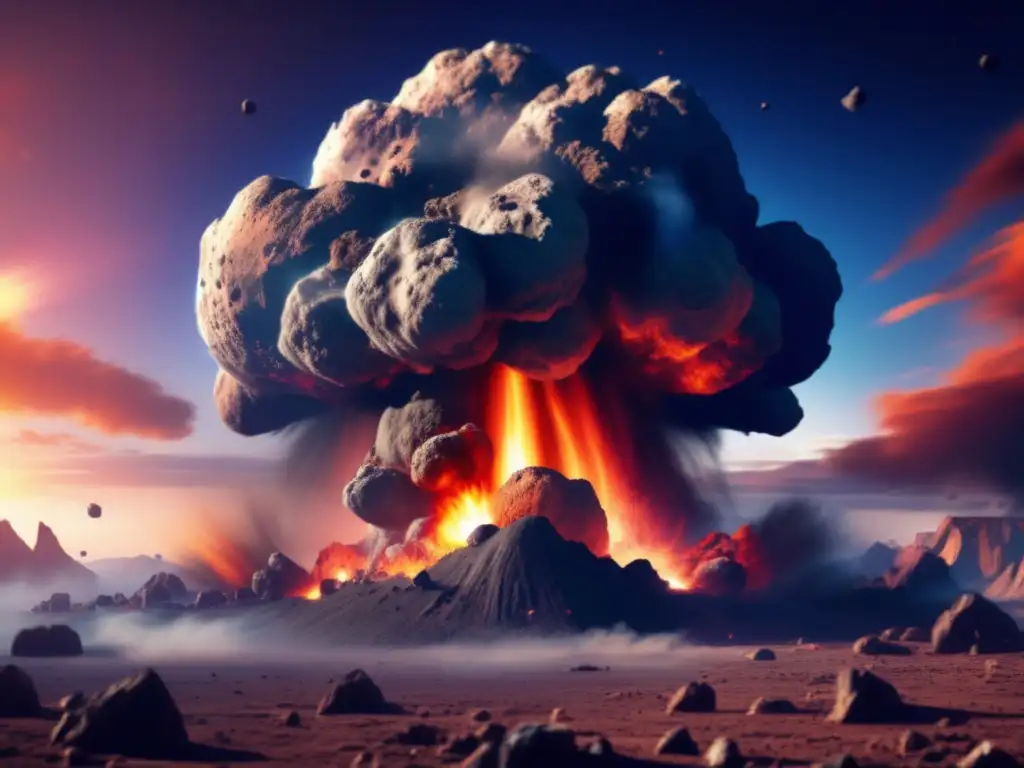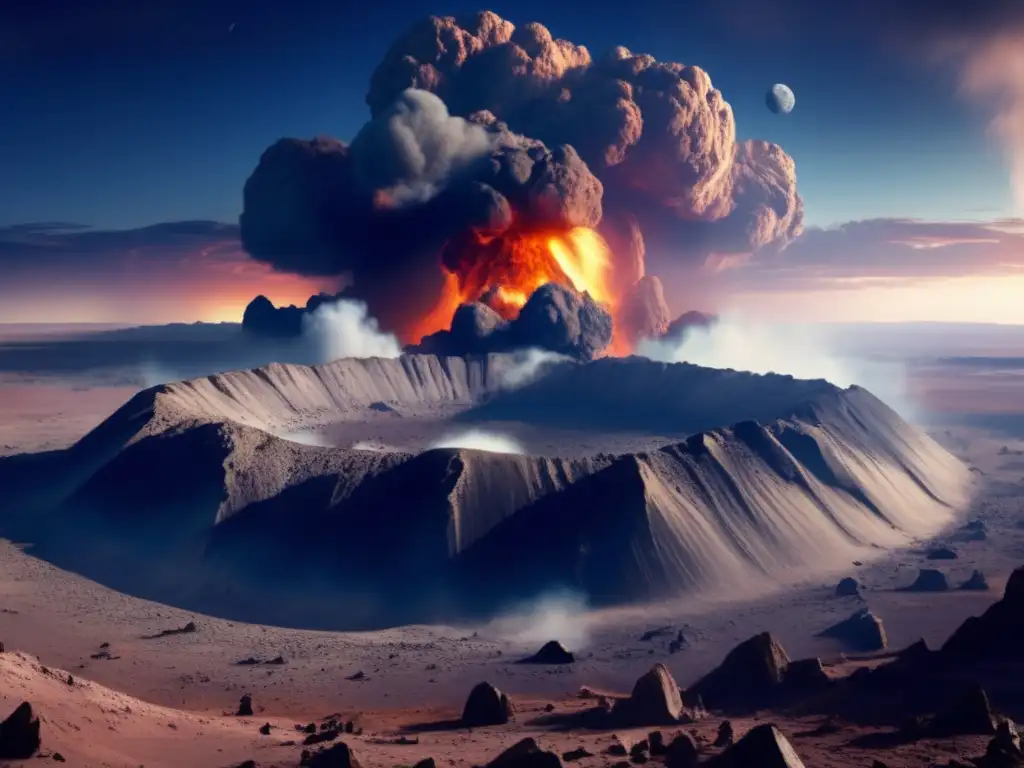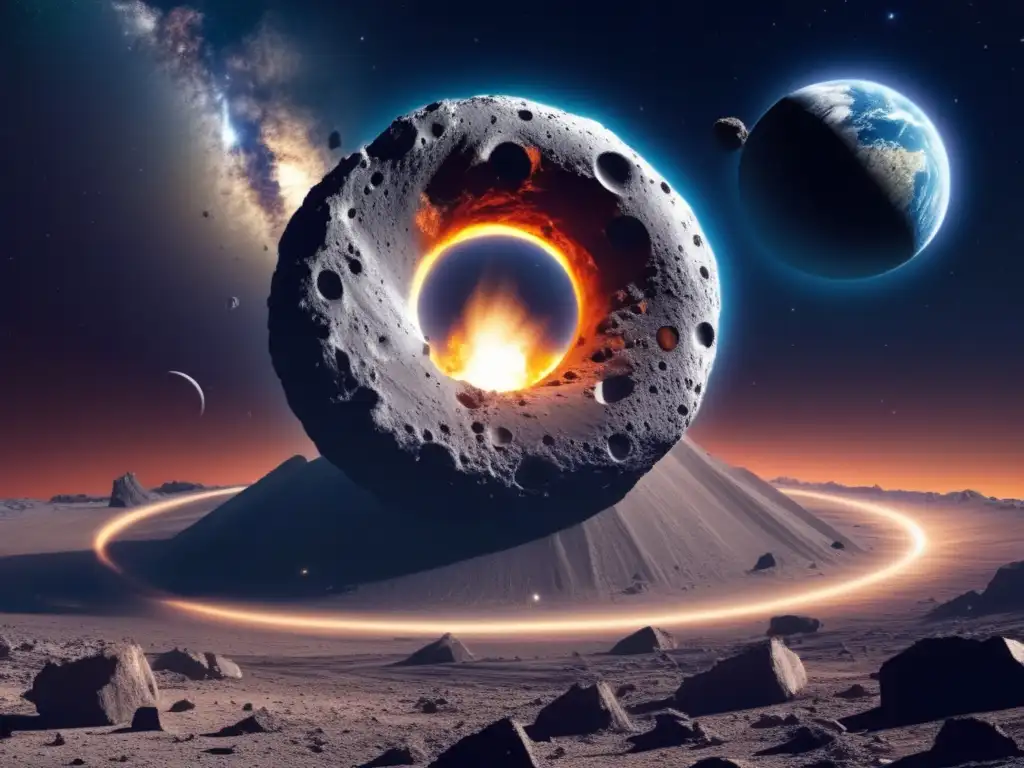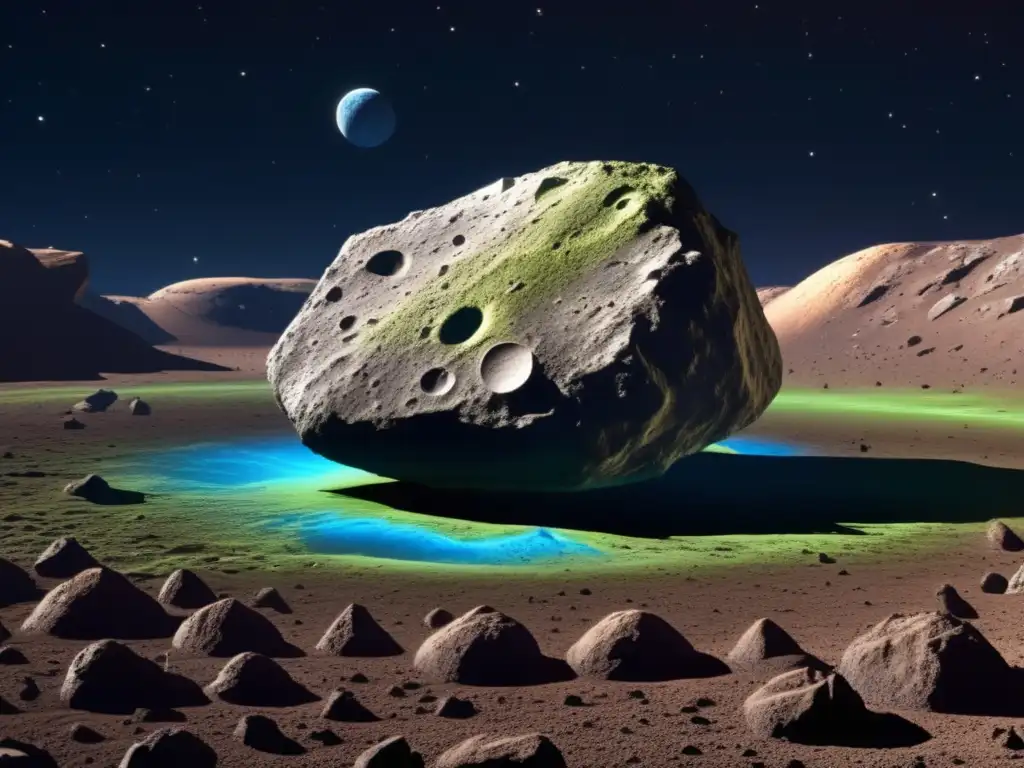The Role Of Asteroids In Earth's Geological History

Introduction
Asteroids have played a crucial role in shaping the geological history of our planet. These celestial objects are remnants from the formation of the solar system and have impacted Earth throughout its existence, creating dramatic effects that range from massive extinction events to the formation of mountain ranges. In this article, we will explore the impact of asteroids on Earth's geological history.
The Chicxulub Impact Event

The Formation of the Chicxulub Crater
The Chicxulub impact event is the most famous asteroid impact event that has ever occurred on Earth. The impact occurred approximately 66 million years ago and is believed to have caused the extinction of the dinosaurs. The Chicxulub crater, which measures approximately 180 kilometers in diameter, was formed as a result of the impact of a massive asteroid with a diameter estimated at 10 kilometers.
The Effects of the Chicxulub Impact on the Earth's Climate
The Chicxulub impact event had a profound effect on the Earth's climate. The impact caused massive global wildfires, acid rain, and a dust cloud that blocked out the sun. This led to a rapid cooling of the planet, which caused the extinction of over 75% of all species on Earth, including the dinosaurs.
The Discovery of the Chicxulub Crater
The Chicxulub crater was discovered by geophysicists in the late 1970s. It wasn't until the 1990s that scientists were able to prove that the impact had caused the extinction of the dinosaurs. Today, the Chicxulub crater is one of the most studied impact craters in the world.
The Vredefort Impact Event

The Formation of the Vredefort Crater
The Vredefort impact event occurred approximately 2 billion years ago and is believed to be the largest known asteroid impact event on Earth. The impact created a crater that measures approximately 300 kilometers in diameter.
The Effects of the Vredefort Impact on the Earth's Geology
The Vredefort impact event had a profound effect on the Earth's geology. The impact caused massive earthquakes, which led to the formation of mountain ranges and deep fractures in the Earth's crust. Today, the Vredefort crater is home to one of the largest gold deposits in the world.
The Discovery of the Vredefort Crater
The Vredefort crater was discovered by geologists in the early 1900s. It wasn't until the 1990s that scientists were able to prove that the impact had created the massive crater.
The Formation of the Moon

The Giant Impact Hypothesis
The formation of the Moon is believed to have been the result of a giant impact between the Earth and a Mars-sized object. The impact caused debris from both objects to be ejected into space, which coalesced to form the Moon.
The Effects of the Moon on the Earth's Geology
The Moon has had a profound effect on the Earth's geology. The Moon's gravity has caused tides on Earth, which has led to erosion and the formation of coastal features such as beaches and cliffs. The Moon's gravity also helps to stabilize the tilt of the Earth's axis, which is critical for maintaining a stable climate.
The Evidence for the Giant Impact Hypothesis
The giant impact hypothesis is supported by numerous lines of evidence, including the similarity between the composition of the Moon and Earth's mantle, the presence of large impact basins on the Moon, and computer models that simulate the formation of the Moon.
Frequently Asked Questions

-
Could an asteroid impact cause the extinction of humans?
Yes, an asteroid impact could cause the extinction of humans. However, the likelihood of this occurring is very low due to the vastness of space and the low probability of a large asteroid striking Earth.
-
How often do asteroids impact Earth?
Asteroids impact Earth regularly, but most asteroids burn up in the atmosphere or strike uninhabited areas. Large asteroid impacts are much rarer and occur on a scale of millions of years.
-
What is the probability of a large asteroid striking Earth in the near future?
The probability of a large asteroid striking Earth in the near future is very low. NASA regularly monitors potentially hazardous asteroids and has plans in place to mitigate the impact of any that are detected.
-
Can we predict when an asteroid impact will occur?
We can predict the orbits of asteroids and identify those that have a chance of colliding with Earth. However, predicting the exact time and location of an impact is currently not possible.
-
What measures can be taken to mitigate the impact of an asteroid?
Possible measures include deflecting the asteroid using spacecraft or nuclear detonations, or evacuating areas that are at risk of impact.
Conclusion
Asteroids have played a crucial role in the geological history of our planet. The impacts of these celestial objects have created some of the most dramatic geological features on Earth and have had a profound effect on the evolution of life on our planet. While the likelihood of a catastrophic asteroid impact is low, scientists are vigilant in monitoring potentially hazardous asteroids and are developing technologies to mitigate their impact. As we continue to explore the role of asteroids in our solar system, we gain a greater understanding of the delicate balance that governs our existence on this planet.
Additional Resources

For more information on asteroids and their impact on Earth's geological history, check out the following resources:
- NASA Planetary Defense
- The Chicxulub Asteroid Impact and Mass Extinction
- The Vredefort Structure: a World Heritage Site
 Devastating Consequences: How Asteroids Can Affect Climate
Devastating Consequences: How Asteroids Can Affect Climate How Asteroid Impacts Influence Terrestrial Life
How Asteroid Impacts Influence Terrestrial Life Case Study: The Impact That Killed The Dinosaurs
Case Study: The Impact That Killed The DinosaursIf you want to discover more articles similar to The Role Of Asteroids In Earth's Geological History, you can visit the Asteroid Impacts category.
Leave a Reply

Articulos relacionados: